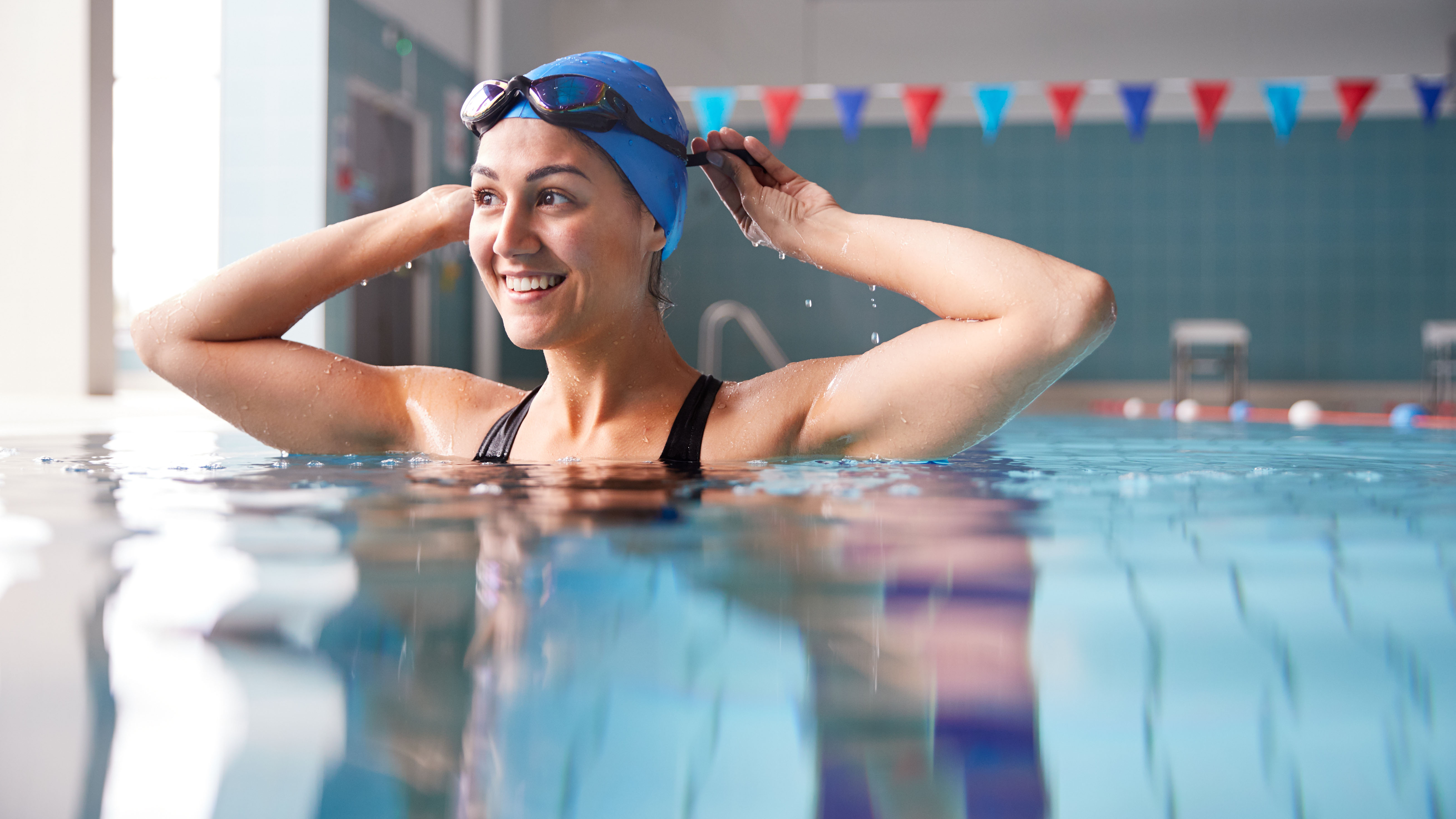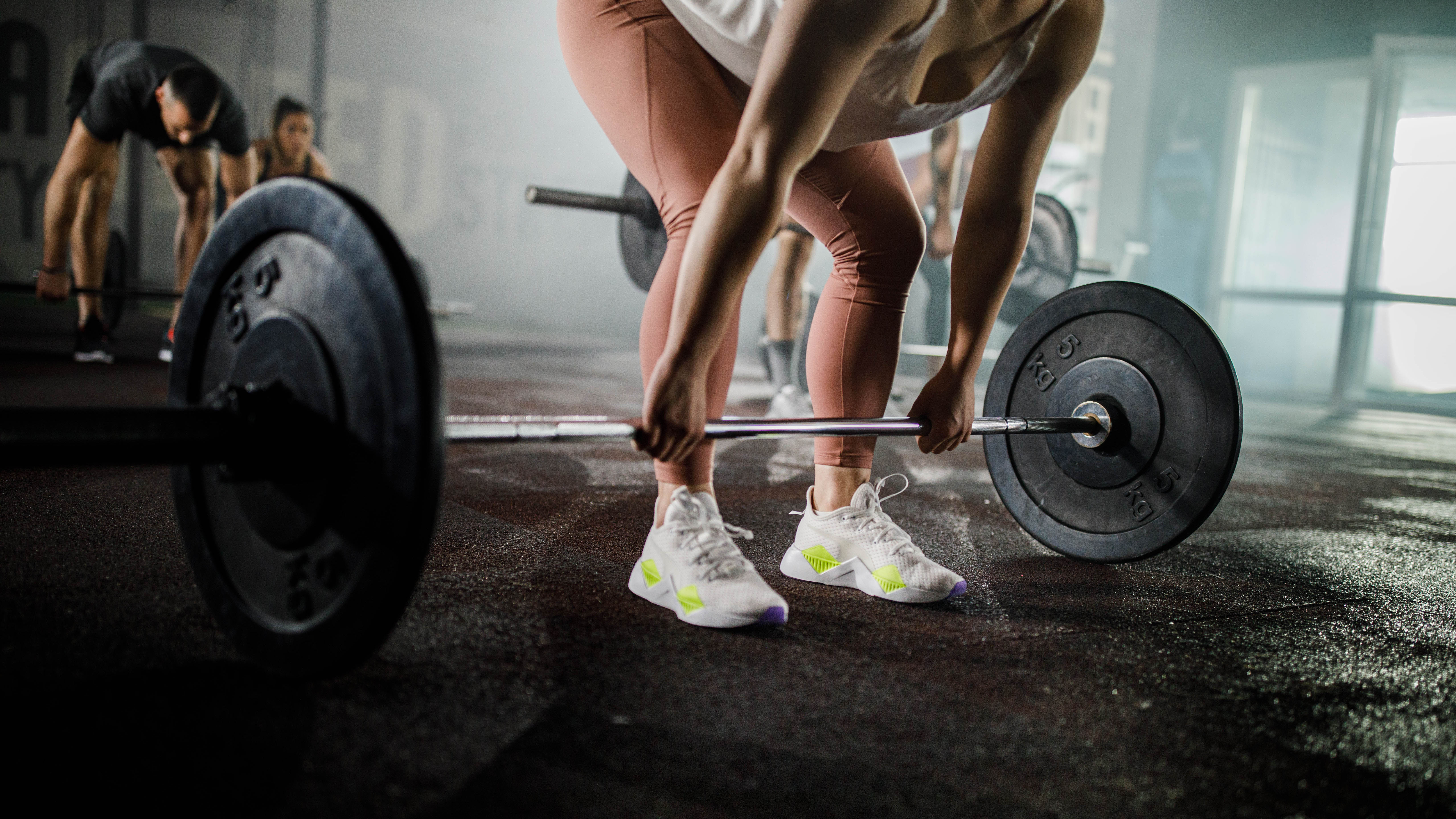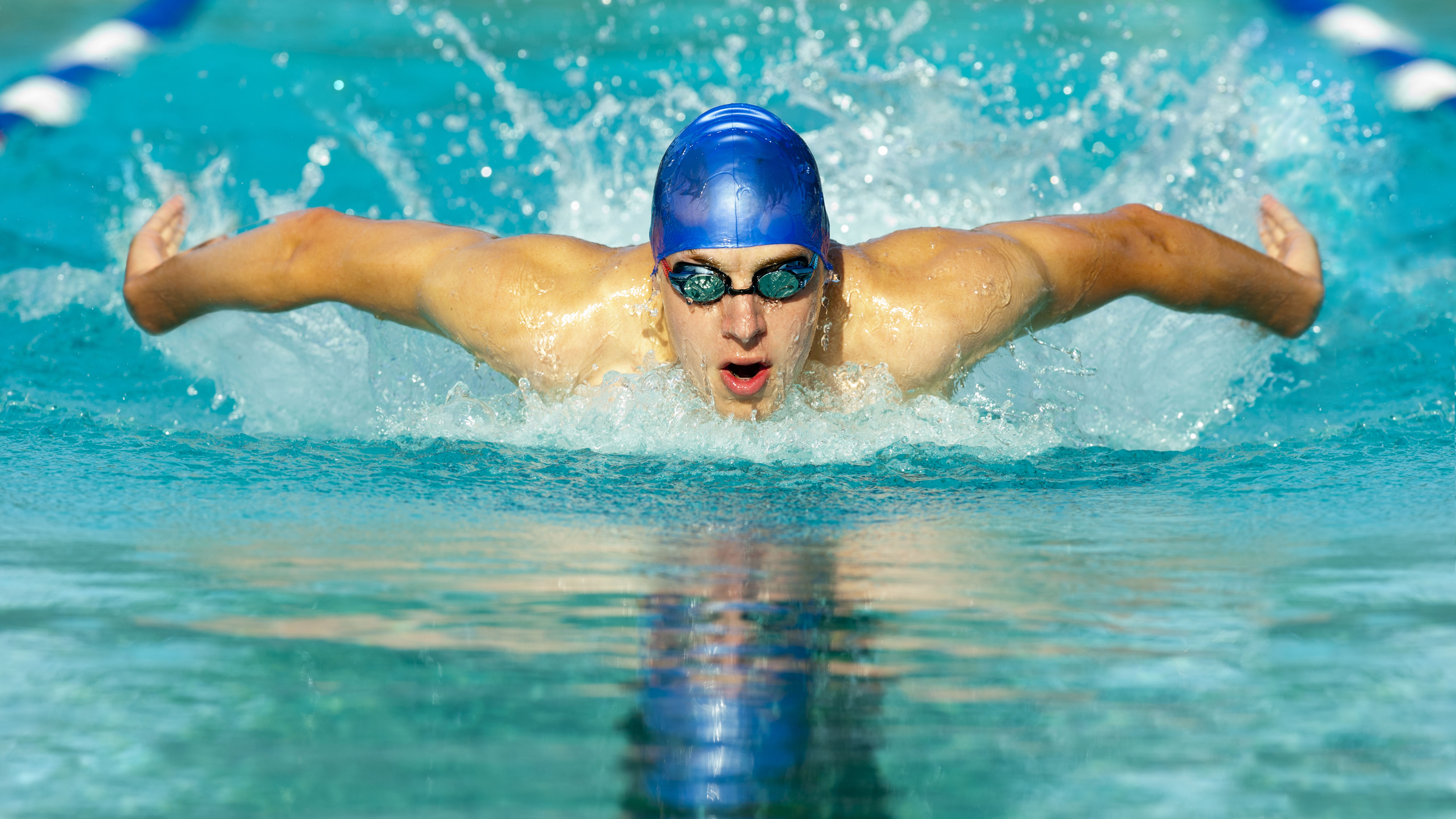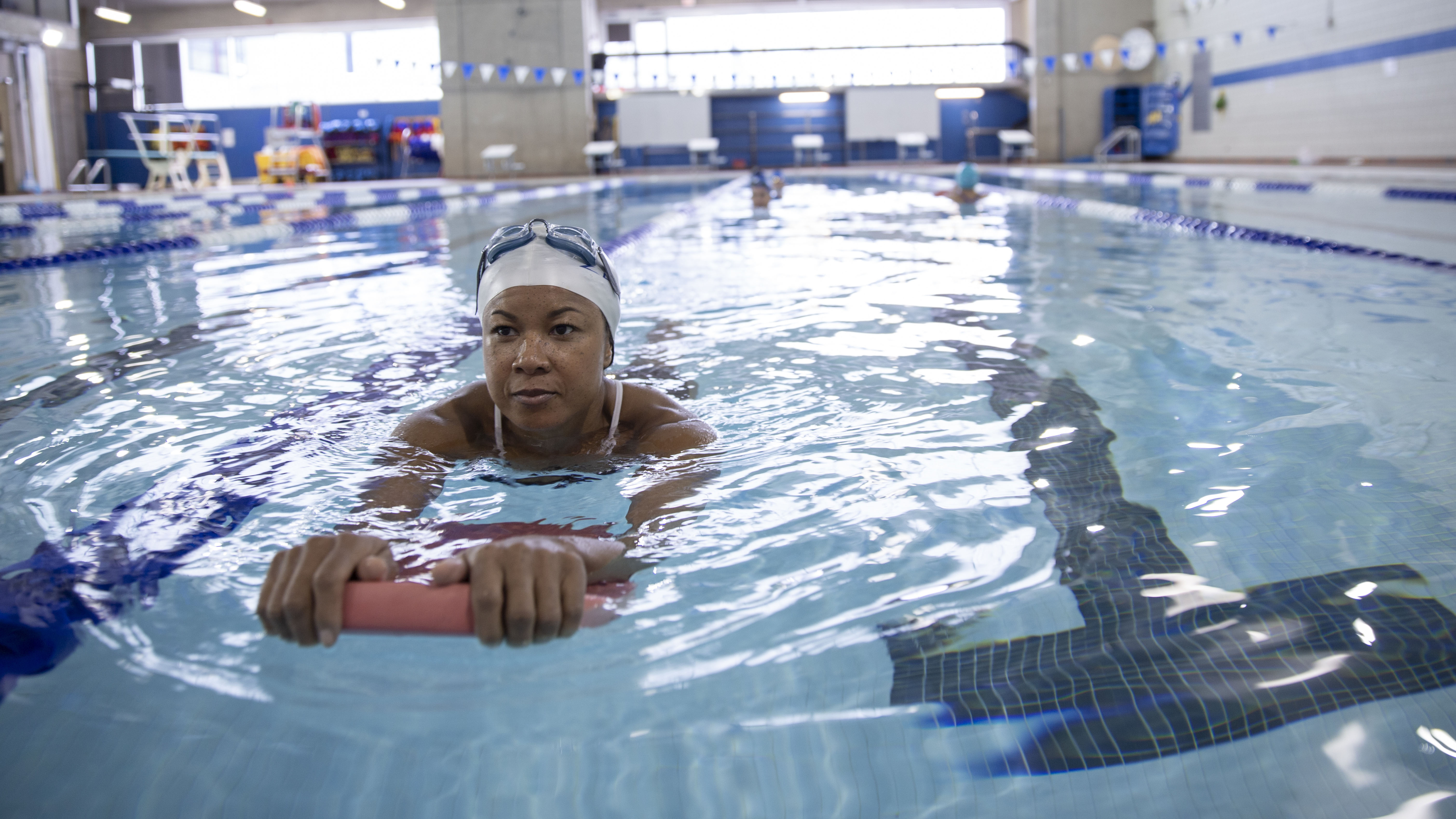Is swimming aerobic or anaerobic exercise?
We answer the question “is swimming aerobic or anaerobic exercise?” and reveal how you can make the most of your session in the pool

If hitting the pool is your favorite way of getting in a daily workout, you may have found yourself asking the question “is swimming aerobic or anaerobic exercise?”
While swimming is generally viewed as a gentle form of aerobic exercise, it is possible to challenge yourself to make time in the pool more anaerobic. A great low impact activity, with the right adjustments swimming can raise the heart rate and engage fast twitch muscles associated with harder workouts.
And whether you are working aerobically or anaerobically, swimming is an effective form of exercise for promoting physical health and helping to prevent cardiovascular disease.
Below, we walk you through everything you need to know when it comes to aerobic vs anaerobic exercise and share our top tips on how you can make swimming workout that much more challenging.
What is aerobic and anaerobic exercise?
The American College of Sport Medicine defines aerobic exercise as any activity that uses large muscle groups, can be maintained continuously and is rhythmic in nature.
"The term aerobic means with oxygen and refers to the use of oxygen to adequately meet energy demands during exercise. The body uses this oxygen to break down energy sources such as glycogen and fats to supply energy," says sports scientist Emily Codd.

Emily Codd is a sports scientist and product analyst at INCUS Performance. She has an MSc in Exercise Physiology and a BSc in Sport and Exercise Science. In her role at INCUS she works with a variety of elite and recreational athletes to help them learn more about their performance, how to improve technique and how to reduce injury.
Aerobic exercise can mean lots of different things. It could be swimming, rowing, walking or cycling on one of the best exercise bikes.
Anaerobic exercise is defined by the Journal of the Canadian Chiropractic Association as intense physical activity of a very short duration, fuelled by the energy sources within the contracting muscles, without the use of oxygen.
Anaerobic exercise entails use of fast twitch muscles with examples of this exercise including sprinting, high intensity interval training (HIIT) and powerlifting.

Aerobic and anaerobic exercise are both categories of metabolism and take place in different parts of the muscle cell. Aerobic exercise relies predominantly on fats for fuel and anaerobic exercise relies predominantly on carbohydrates for fuel
When swimming fast we rely more on anaerobic metabolism and when swimming more slowly we rely on aerobic metabolism.
"How fast we are swimming will determine which fuel sources we are using and hence whether we are relying predominantly on aerobic metabolism or predominantly on anaerobic metabolism. This in-turn will change as we slow down and speed up. The word ‘predominantly’ is important here. Metabolism relies on a mixture of these different energy pathways being used — we don’t simply switch-on and switch-off different metabolic pathways," explains sports and exercise scientist Mitch Lomax.

Dr Mitch Lomax is a Reader in Pulmonary Exercise Physiology in the School of Sport, Health and Exercise Science at the University of Portsmouth. She is a BASES Accredited Sport and Exercise Scientist and a Chartered Scientist. As well as providing scientific support to a number of individual athletes, she has also provided scientific support to the England pistol shooting squad, Swim England and British Swimming.
Is swimming aerobic or anaerobic?
Swimming can be both aerobic and anaerobic depending on the intensity and duration.
"Usually, the longer the exercise duration, the greater aerobic predominance. Shorter more explosive swimming training such as sprinting is primarily anaerobic," says Codd.
The predominance of the energy system all depends on how quickly you are swimming. Swimming slowly uses predominantly aerobic metabolism whereas swimming fast uses predominantly anaerobic metabolism.

"Fast is a relative term and not related to an absolute or fixed swimming speed. What will be considered a slow speed for a fit, skilled swimmer will be a fast speed for someone less fit and less skilled. This means that the contributions made by the different metabolic pathways will differ even though swimming speed is the same," adds Lomax.
So, the more you speed up, the greater the contribution from the anaerobic pathways and the more you slow down, the greater the contribution from aerobic metabolism. But the best way to judge this is on perceived effort rather than a set speed.
How can you make swimming a more challenging workout?
Codd recommends adding resistance to your training sessions to make them more challenging. "Using equipment such as fins or paddles will increase muscular engagement when you swim," she says.
You can also add intervals into your training much like you would with running. This is a pace that is hard but sustainable for a certain amount of time.
"You will feel more comfortable early on in the session, however you will start to become uncomfortable as the session progresses. Training in this way with a higher effort while incorporating shorter rest periods between each rep, rather than easy intensity swimming with a long rest, will create a more challenging workout, develop your aerobic capacity and train you to sustain moderately high speeds for longer," says Codd.
Mixing up your swimming and being creative is only limited by your imagination, says Lomax.

"You could try swimming different strokes. Not all strokes are equal when it comes to swimming efficiency, you could spend more time on a stroke that you find harder to swim. You could also try to complete more laps in your usual swim time. For example, have some part of the swim where you swim faster than you usually do or reduce your rest periods between laps," she adds.
Alternatively, rearrange your usual steady state swim into a number of sets that are swum at progressive speeds. Divide up 12 laps into one length easy, one length moderate, one length fast, then rest and repeat this four times.
You can also play around with progressive distances such as 50 metres, short rest, 100 metres, short rest, 200 metres, long rest, repeat three times.
"Rather than always swimming full stroke you could also introduce some swimming drills, or legs only swimming, or arms only swimming — there are swimming aids such as kickboards and pull buoys that can help with this. You could also wear a special swimming drag suit over your regular costume to make it harder to move through the water," adds Lomax.
This article is not meant to offer medical advice and readers should consult their doctor or healthcare professional before adopting any diet or exercise regime.
Sign up for the Live Science daily newsletter now
Get the world’s most fascinating discoveries delivered straight to your inbox.
Lily Canter is a freelance money, health and lifestyle journalist with more than 20 years' experience. She writes about fitness for Fit+Well, Tom's Guide, T3, South China Morning Post, Runner's World and Trail Running magazine. She focuses on personal finance for Yahoo! Finance UK, Metro, The Guardian, and loveMONEY. In her spare time she is an ultra-runner, canicrosser and UK Athletics running coach. She also co-hosts the award-winning podcast Freelancing for Journalists.











